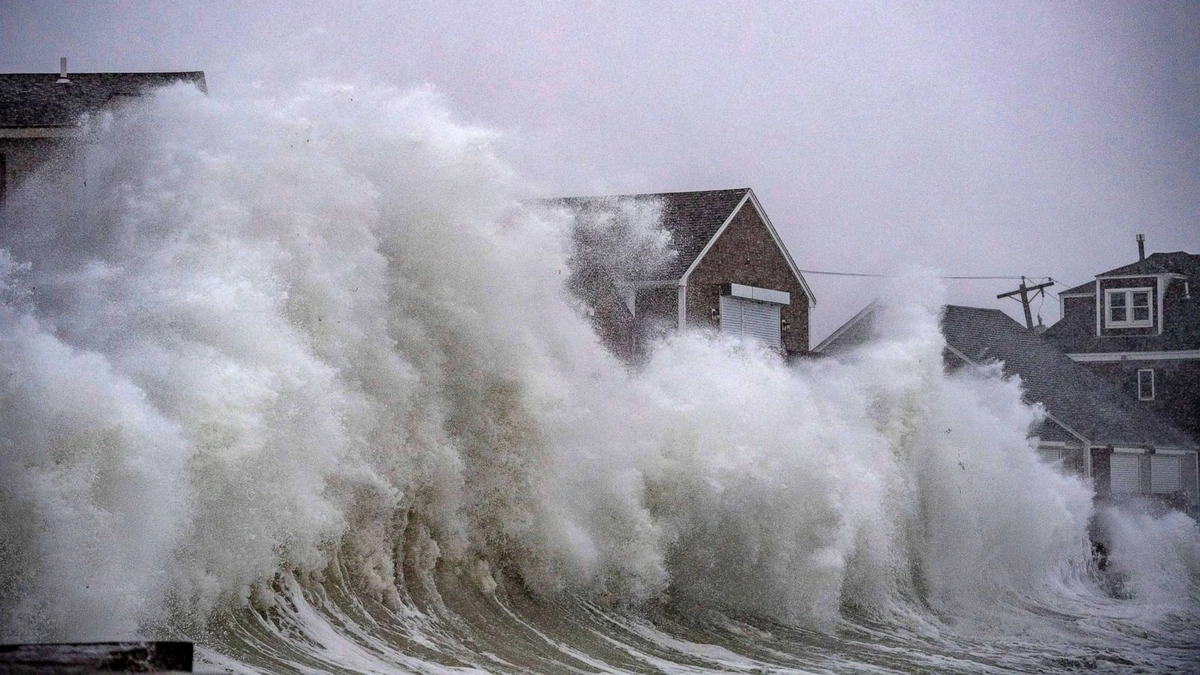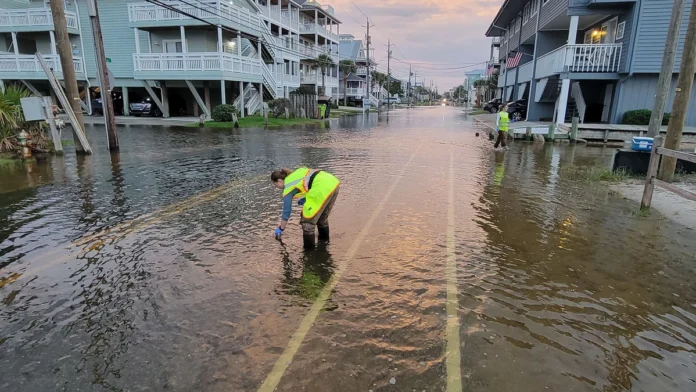Okay, let’s be real. When you hear “Nor’easter,” especially if you’re anywhere near the Jersey Shore, a shiver probably runs down your spine. It’s not just another storm; it’s a meteorological menace that can turn paradise into a potential disaster zone faster than you can say “boardwalk fries.” And with recent news highlighting increasing coastal flood concerns, it’s worth taking a deeper look. What’s REALLY going on here, beyond the headlines?
So, why should you care, especially if you’re miles away from the coast? Because what’s happening on the Jersey Shore is a microcosm of a much larger global issue – the increasing vulnerability of coastal communities to extreme weather events. Understanding the dynamics at play here can help us all better prepare for the future, no matter where we live.
The Anatomy of a Nor’easter | More Than Just a Storm

Let’s break it down. A Nor’easter isn’t just a fancy name for a storm. It’s a specific type of storm that forms along the East Coast of North America. The name comes from the direction of the winds – typically blowing from the northeast. But the real kicker? These storms can pack a serious punch, bringing with them heavy snow, rain, and, you guessed it, significant coastal flooding . The geographical location of the Jersey Shore makes it extremely vulnerable to these storms.
But here’s the thing: it’s not just the storm itself. Several factors contribute to the severity of the impact. High tides, for instance, can exacerbate flooding, pushing water levels even higher. And then there’s the issue of sea-level rise, a long-term consequence of climate change that’s steadily increasing the baseline for potential flooding events. It’s like the ocean is already starting the race a few steps ahead.
Why Coastal Flooding is Getting Worse
Now, let’s talk about why coastal flood events seem to be getting more frequent and more intense. Climate change is the big, unavoidable elephant in the room. Rising global temperatures are causing sea levels to rise due to thermal expansion (water expands when it warms) and the melting of glaciers and ice sheets. According to the Environmental Protection Agency (EPA) , global average sea level has risen by about 8-9 inches since 1880, and the rate of rise is accelerating. That doesn’t seem like a lot, but it makes storm surges much more dangerous.
But it’s not just about sea-level rise. Changes in atmospheric patterns are also playing a role. Some studies suggest that climate change is altering the behavior of storms, making them more intense and unpredictable. This can lead to stronger winds, heavier rainfall, and, of course, more severe flooding. This is why places like the Jersey Shore are increasingly at risk. The frequency of flooding is increasing, and the intensity is also increasing.
The Human Impact | More Than Just Wet Basements
Okay, so we’ve established that coastal flooding is a growing problem. But what does that actually mean for the people who live and work on the Jersey Shore? The impacts are far-reaching and can be devastating.
Obviously, there’s the immediate damage to property. Homes and businesses can be flooded, leading to costly repairs and, in some cases, complete destruction. But the economic consequences extend beyond that. Flooding can disrupt tourism, a major source of revenue for many coastal communities. Businesses may have to close temporarily or even permanently, leading to job losses and economic hardship. You see stores boarded up after storms, and it’s more than just an inconvenience – it’s someone’s livelihood on the line.
Beyond the economic impacts, there are also significant social and psychological consequences. Displacement from homes can lead to stress, anxiety, and even mental health problems. The disruption of social networks and community ties can further exacerbate these issues. Coastal erosion can also amplify these issues. It’s hard to put a price on the emotional toll that repeated flooding events can take on a community.
What Can Be Done? Adaptation and Mitigation Strategies
So, is there anything we can do to address the growing threat of coastal flood ing? Absolutely. There are two main approaches: mitigation and adaptation. Mitigation involves reducing greenhouse gas emissions to slow down climate change and sea-level rise. This is a long-term strategy that requires global cooperation.
Adaptation, on the other hand, involves taking steps to protect coastal communities from the impacts of flooding. This can include building seawalls and other coastal defenses, elevating homes and businesses, and restoring natural coastal habitats like wetlands and dunes, which can act as natural buffers against storm surges. For example, the restoration of wetlands can significantly reduce the impact of storm surges and provide natural water storage. There are a lot of projects trying to restore these natural barriers.
But adaptation also involves changing the way we live and work in coastal areas. This might mean relocating critical infrastructure away from vulnerable areas, implementing stricter building codes, and developing early warning systems to alert residents to impending floods. Education and awareness are also key. People need to understand the risks they face and what they can do to protect themselves and their property.
Looking Ahead | The Future of the Jersey Shore and Beyond
The future of the Jersey Shore, and indeed of coastal communities around the world, depends on our ability to take decisive action to address coastal flooding . This requires a combination of mitigation, adaptation, and a fundamental shift in our thinking about how we interact with the natural world. It’s not just about protecting our property; it’s about protecting our communities, our economies, and our way of life.
Here’s the thing: the challenges we face are significant, but they are not insurmountable. By working together, investing in innovative solutions, and embracing a more sustainable future, we can build more resilient coastal communities that can thrive in the face of a changing climate. It will require long-term planning and investments, but it is essential for the long-term survival of these communities. Now more than ever before, focusing on resiliency is key to survival. Check out this link for related stories.
And honestly? It’s not just about the Jersey Shore. It’s about setting an example for other communities facing similar challenges. Because the truth is, we’re all in this together. The rising tides don’t discriminate.
FAQ
What exactly is a Nor’easter?
A Nor’easter is a type of storm that forms along the East Coast, known for winds from the northeast and heavy precipitation.
How does climate change affect coastal flooding?
Climate change causes sea levels to rise, making coastal flooding more frequent and intense.
What can I do to protect my home from flooding?
Consider elevating your home, installing flood barriers, and ensuring proper drainage.
Are there any long-term solutions to prevent coastal flooding ?
Mitigation efforts to reduce greenhouse gas emissions are crucial for slowing climate change. More news here .
What role do natural habitats play in flood protection?
Wetlands and dunes act as natural buffers, absorbing storm surges and reducing flooding.
Where can I find reliable information about coastal flood risks?
Check with local government agencies and scientific organizations for the most accurate data.




